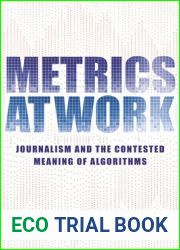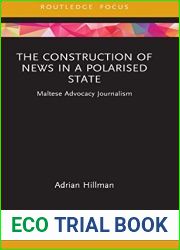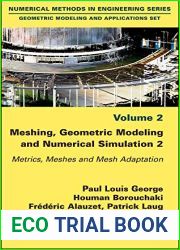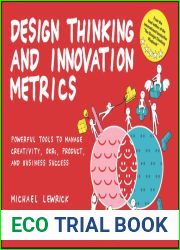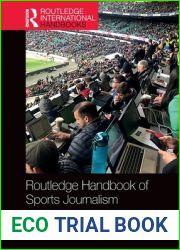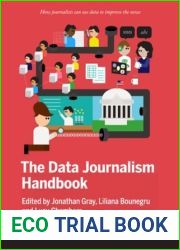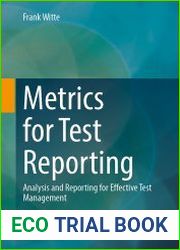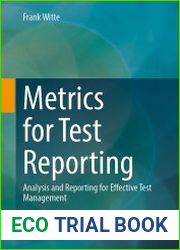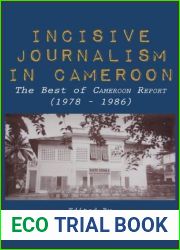
BOOKS - Metrics at Work: Journalism and the Contested Meaning of Algorithms

Metrics at Work: Journalism and the Contested Meaning of Algorithms
Author: Angele Christin
Year: June 30, 2020
Format: PDF
File size: PDF 3.5 MB
Language: English

Year: June 30, 2020
Format: PDF
File size: PDF 3.5 MB
Language: English

Metrics at Work: Journalism and the Contested Meaning of Algorithms In today's digital age, the use of algorithms and audience metrics has become an integral part of the journalism industry. With the advent of online news, journalists now have access to a wealth of data about their audiences, including click-through rates, engagement times, and demographic information. This data has revolutionized the way journalists approach their work, from the types of stories they cover to the way they present them. However, the impact of these metrics on the field of journalism is not without controversy. In her book, Metrics at Work: Journalism and the Contested Meaning of Algorithms, Angele Christin explores the starkly different ways that American and French online news companies respond to audience analytics and what this means for the future of news. Through four years of fieldwork in web newsrooms in the United States and France, Christin conducted over one hundred interviews with journalists, revealing both similarities and crucial differences in how American and French journalists understand audience analytics. While American journalists tend to disregard traffic numbers and rely on the opinions of their peers to define journalistic quality, French journalists fixate on internet traffic and view these numbers as a sign of their resonance in the public sphere. These disparities, argues Christin, can be attributed to distinct cultural and historical explanations that shape how journalists make sense of digital measurements in each country. The book challenges the popular belief that algorithms and analytics are globally homogenizing forces, instead showing that computational technologies can have surprisingly divergent ramifications for work and organizations worldwide.
Метрики в работе: журналистика и оспариваемый смысл алгоритмов В современную цифровую эпоху использование алгоритмов и метрик аудитории стало неотъемлемой частью индустрии журналистики. С появлением онлайн-новостей журналисты теперь имеют доступ к большому количеству данных о своей аудитории, включая показатели кликов, время взаимодействия и демографическую информацию. Эти данные произвели революцию в том, как журналисты подходят к своей работе, от типов историй, которые они освещают, до того, как они их представляют. Однако влияние этих показателей на сферу журналистики не обходится без споров. В своей книге «Metrics at Work: Journalism and the Competited Meaning of Algorithms» Анхель Кристин исследует совершенно разные способы, которыми американские и французские новостные онлайн-компании реагируют на аналитику аудитории, и что это означает для будущего новостей. За четыре года работы на местах в залах веб-новостей в США и Франции Кристин провел более ста интервью с журналистами, выявив как сходства, так и существенные различия в том, как американские и французские журналисты понимают аналитику аудитории. В то время как американские журналисты, как правило, игнорируют цифры трафика и полагаются на мнение своих сверстников при определении журналистского качества, французские журналисты зацикливаются на интернет-трафике и рассматривают эти цифры как знак своего резонанса в публичной сфере. Эти различия, утверждает Кристин, можно объяснить различными культурными и историческими объяснениями, которые определяют, как журналисты понимают цифровые измерения в каждой стране. Книга бросает вызов распространенному мнению, что алгоритмы и аналитика глобально гомогенизируют силы, вместо этого показывая, что вычислительные технологии могут иметь удивительно разные последствия для работы и организаций во всем мире.
s métriques dans le travail : le journalisme et le sens contesté des algorithmes À l'ère numérique moderne, l'utilisation d'algorithmes et de mesures d'audience est devenue une partie intégrante de l'industrie du journalisme. Avec l'arrivée des nouvelles en ligne, les journalistes ont maintenant accès à un grand nombre de données sur leur public, y compris les taux de clics, les temps d'interaction et les informations démographiques. Ces données ont révolutionné la façon dont les journalistes abordent leur travail, depuis les types d'histoires qu'ils couvrent jusqu'à leur présentation. Mais l'impact de ces indicateurs sur le journalisme n'est pas sans controverse. Dans son livre Metrics at Work : Journalisme and the Competited Meaning of Algorithms, Angel Christine explore les façons très différentes dont les entreprises d'information en ligne américaines et françaises réagissent aux analyses d'audience, et ce que cela signifie pour l'avenir des nouvelles. Au cours de ses quatre années de travail sur le terrain dans les salles de presse Web aux États-Unis et en France, Christine a mené plus d'une centaine d'entretiens avec des journalistes, révélant à la fois des similitudes et des différences significatives dans la façon dont les journalistes américains et français comprennent les analyses d'audience. Alors que les journalistes américains ont tendance à ignorer les chiffres du trafic et à s'appuyer sur les opinions de leurs pairs pour déterminer la qualité journalistique, les journalistes français se concentrent sur le trafic Internet et considèrent ces chiffres comme un signe de leur résonance dans la sphère publique. Ces différences, affirme Christine, peuvent s'expliquer par diverses explications culturelles et historiques qui définissent la façon dont les journalistes comprennent les dimensions numériques de chaque pays. livre récuse la croyance populaire que les algorithmes et les analystes homogénéisent les forces à l'échelle mondiale, montrant plutôt que les technologies informatiques peuvent avoir des conséquences étonnamment différentes sur le travail et les organisations dans le monde entier.
Métricas en el trabajo: el periodismo y el sentido cuestionado de los algoritmos En la era digital moderna, el uso de algoritmos y métricas de audiencia se ha convertido en una parte integral de la industria del periodismo. Con la llegada de las noticias en línea, los periodistas ahora tienen acceso a una gran cantidad de datos sobre su audiencia, incluyendo indicadores de clics, tiempo de interacción e información demográfica. Estos datos han revolucionado la forma en que los periodistas abordan su trabajo, desde los tipos de historias que cubren hasta cómo las presentan. n embargo, el impacto de estos indicadores en el campo del periodismo no está exento de polémica. En su libro Metrics at Work: Journalism and the Competited Meaning of Algorithms, Ángel Christine explora formas completamente diferentes en las que las empresas de noticias en línea estadounidenses y francesas responden a los análisis de audiencia, y lo que esto significa para el futuro de las noticias. En sus cuatro de trabajo de campo en salas de noticias web en Estados Unidos y Francia, Christine ha realizado más de cien entrevistas con periodistas, revelando tanto similitudes como diferencias significativas en la forma en que los periodistas estadounidenses y franceses entienden los análisis de audiencia. Mientras que los periodistas estadounidenses tienden a ignorar las cifras de tráfico y confiar en la opinión de sus pares para determinar la calidad periodística, los periodistas franceses se obsesionan con el tráfico de internet y ven estas cifras como un signo de su resonancia en el ámbito público. Estas diferencias, argumenta Christine, se pueden explicar con diferentes explicaciones culturales e históricas que definen cómo los periodistas entienden las dimensiones digitales en cada país. libro desafía la creencia popular de que los algoritmos y los analistas homogeneizan globalmente las fuerzas, mostrando en cambio que la tecnología computacional puede tener consecuencias sorprendentemente diferentes para el trabajo y las organizaciones en todo el mundo.
O jornalismo e o sentido contestado dos algoritmos Na era digital atual, o uso de algoritmos e métricas de audiência tornou-se parte integrante da indústria jornalística. Com o noticiário online, os jornalistas têm agora acesso a um grande número de dados sobre o seu público, incluindo indicadores de cliques, tempo de interação e informações demográficas. Estes dados revolucionaram a forma como os jornalistas abordam o seu trabalho, desde os tipos de histórias que eles cobrem até a forma como os apresentam. No entanto, os efeitos destes indicadores sobre o jornalismo não faltam. Em seu livro «Metrics at Work: Jornalism and the Competed Meaning of Algorithms», Angel Christine explora maneiras muito diferentes que empresas de notícias americanas e francesas respondem aos analistas de audiência, e o que isso significa para notícias futuras. Durante os quatro anos em que trabalhou em salas de notícias na Web nos Estados Unidos e na França, Christine realizou mais de cem entrevistas com jornalistas, revelando semelhanças e diferenças significativas na forma como jornalistas americanos e franceses entendem os analistas de audiência. Enquanto os jornalistas americanos geralmente ignoram os números do tráfico e dependem das opiniões de seus pares na definição da qualidade jornalística, os jornalistas franceses se concentram no tráfego online e veem esses números como um sinal de sua ressonância na esfera pública. Estas diferenças, afirma Christine, podem ser explicadas por várias explicações culturais e históricas que definem como os jornalistas compreendem as dimensões digitais de cada país. O livro desafia a crença comum de que algoritmos e analistas globalmente homogeneizam forças, ao invés de mostrar que a computação pode ter consequências surpreendentemente diferentes para o trabalho e organizações em todo o mundo.
Metriche nel lavoro: giornalismo e significato contestato degli algoritmi Nell'era digitale moderna, l'uso di algoritmi e metriche del pubblico è diventato parte integrante dell'industria del giornalismo. Con l'introduzione delle notizie online, i giornalisti hanno ora accesso a un gran numero di dati sul proprio pubblico, inclusi gli indicatori click, i tempi di interazione e le informazioni demografiche. Questi dati hanno rivoluzionato il modo in cui i giornalisti si avvicinano al loro lavoro, dai tipi di storie che raccontano, al modo in cui li presentano. Ma l'impatto di questi indicatori sul giornalismo non è esente da polemiche. Nel suo libro, «Metrics at Work: Journalism and the Competitived Meaning of Algorithms», Angel Christine sta esplorando modi molto diversi in cui le aziende di notizie americane e francesi reagiscono all'analisi del pubblico, e ciò significa per il futuro delle notizie. In quattro anni di attività sul campo nelle sale web negli Stati Uniti e in Francia, Christine ha condotto più di cento interviste con i giornalisti, evidenziando le somiglianze e le differenze sostanziali nel modo in cui i giornalisti americani e francesi comprendono l'analisi del pubblico. Mentre i giornalisti americani tendono a ignorare i numeri del traffico e a contare sulle opinioni dei loro coetanei nel definire la qualità del giornalismo, i giornalisti francesi si concentrano sul traffico online e li considerano come un segno della loro risonanza pubblica. Queste differenze, sostiene Christine, possono essere attribuite a diverse spiegazioni culturali e storiche che determinano come i giornalisti capiscono le dimensioni digitali in ogni paese. Il libro sfida l'opinione comune che algoritmi e analisti omogeneizzano globalmente le forze, dimostrando invece che la tecnologia informatica può avere conseguenze sorprendentemente diverse sul lavoro e sulle organizzazioni di tutto il mondo.
Metriken in der Arbeit: Journalismus und die umstrittene Bedeutung von Algorithmen Im heutigen digitalen Zeitalter ist der Einsatz von Algorithmen und Publikumsmetriken zu einem festen Bestandteil der journalistischen Industrie geworden. Mit dem Aufkommen von Online-Nachrichten haben Journalisten jetzt Zugriff auf eine Vielzahl von Daten über ihr Publikum, einschließlich Klickraten, Interaktionszeiten und demografische Informationen. Diese Daten haben die Art und Weise revolutioniert, wie Journalisten ihre Arbeit angehen, von der Art der Geschichten, über die sie berichten, bis hin zur Art und Weise, wie sie sie präsentieren. Die Auswirkungen dieser Indikatoren auf den Journalismus sind jedoch nicht unumstritten. In ihrem Buch „Metrics at Work: Journalism and the Competited Meaning of Algorithms“ untersucht Angel Christine, wie amerikanische und französische Online-Nachrichtenunternehmen auf Publikumsanalysen reagieren und was dies für die Zukunft der Nachrichten bedeutet. Während ihrer vierjährigen Feldarbeit in Web-Newsrooms in den USA und Frankreich hat Christine mehr als hundert Interviews mit Journalisten geführt und dabei sowohl Ähnlichkeiten als auch signifikante Unterschiede in der Art und Weise aufgezeigt, wie amerikanische und französische Journalisten die Analysen des Publikums verstehen. Während amerikanische Journalisten dazu neigen, Verkehrszahlen zu ignorieren und sich bei der Bestimmung der journalistischen Qualität auf die Meinung ihrer Kollegen zu verlassen, fixieren sich französische Journalisten auf den Internetverkehr und sehen diese Zahlen als Zeichen ihrer Resonanz in der Öffentlichkeit. Diese Unterschiede, argumentiert Christine, lassen sich durch verschiedene kulturelle und historische Erklärungen erklären, die bestimmen, wie Journalisten die digitalen Dimensionen in jedem Land verstehen. Das Buch stellt die weit verbreitete Ansicht in Frage, dass Algorithmen und Analysen die Kräfte global homogenisieren, und zeigt stattdessen, dass Computertechnologien überraschend unterschiedliche Auswirkungen auf Arbeit und Organisationen auf der ganzen Welt haben können.
Metryka w pracy: Dziennikarstwo i kwestionowane znaczenie algorytmów We współczesnej erze cyfrowej zastosowanie algorytmów i mierników odbiorców stało się integralną częścią branży dziennikarskiej. Wraz z pojawieniem się wiadomości online dziennikarze mają teraz dostęp do bogactwa danych o swoich odbiorcach, w tym wskaźników kliknięć, czasów interakcji i informacji demograficznych. Dane zrewolucjonizowały sposób, w jaki dziennikarze podchodzą do swojej pracy, począwszy od rodzajów opowiadań, które opisują, aż po sposób ich prezentacji. Wpływ tych wskaźników na dziedzinę dziennikarstwa nie jest jednak pozbawiony kontrowersji. W książce Metrics at Work: Journalism and the Competitive Meaning of Algorithms (Metryka w pracy: dziennikarstwo i konkurencyjne znaczenie algorytmów) Angel Christine bada ogromnie różne sposoby reagowania amerykańskich i francuskich firm informacyjnych na analitykę publiczności i co to oznacza dla przyszłości wiadomości. Ponad cztery lata pracy na miejscu w gazetach internetowych w Stanach Zjednoczonych i Francji, Christine przeprowadziła ponad sto wywiadów z dziennikarzami, ujawniając zarówno podobieństwa, jak i znaczne różnice w sposobie, w jaki dziennikarze amerykańscy i francuscy rozumieją analitykę publiczności. Podczas gdy amerykańscy dziennikarze mają tendencję do ignorowania danych ruchu drogowego i polegania na opiniach swoich rówieśników w celu określenia jakości dziennikarskiej, francuscy dziennikarze mają obsesję na punkcie ruchu internetowego i postrzegają te dane jako oznakę ich rezonansu w sferze publicznej. Różnice te, przekonuje Kristin, można wyjaśnić różnymi wyjaśnieniami kulturowymi i historycznymi, które decydują o tym, jak dziennikarze rozumieją wymiary cyfrowe w każdym kraju. Książka kwestionuje powszechne przekonanie, że algorytmy i analityka globalnie homogenizują siły, zamiast pokazać, że technologia obliczeniowa może mieć zaskakująco różne konsekwencje dla pracy i organizacji na całym świecie.
Metrics at Work: Journal and the Contempted Meaning of Algorithms בעידן הדיגיטלי המודרני, השימוש באלגוריתמים ומדדי קהל הפך לחלק בלתי נפרד מתעשיית העיתונות. עם עליית החדשות המקוונות, לעיתונאים יש גישה לעושר של נתונים על הקהל שלהם, כולל שיעורי לחיצה, זמני אינטראקציה ומידע דמוגרפי. הנתונים חוללו מהפכה בדרך שבה עיתונאים ניגשים לעבודתם, החל בסוגי הסיפורים שהם מכסים ועד איך שהם מציגים אותם. עם זאת, השפעתם של סממנים אלה על תחום העיתונות אינה חסרת מחלוקת. בספרה Metrics at Work: Journalism and the Contropertive Meaning of Algorithms, אנג 'ל כריסטין חוקרת את הדרכים השונות לחלוטין שחברות החדשות האמריקאיות והצרפתיות מגיבות לניתוח הקהל, ומה זה אומר לגבי עתיד החדשות. למעלה מארבע שנים של עבודה על הקרקע בחדרי חדשות בארה "ב ובצרפת, קיימה כריסטין יותר ממאה ראיונות עם עיתונאים, שחשפו הן קווי דמיון והן הבדלים משמעותיים באופן שבו עיתונאים אמריקאים וצרפתים מבינים את אנליטיקת הקהל. בעוד עיתונאים אמריקאים נוטים להתעלם מדמויות התנועה ולסמוך על דעותיהם של עמיתיהם כדי לקבוע איכות עיתונאית, עיתונאים צרפתים אובססיביים לגבי תעבורת אינטרנט ורואים את הנתונים האלה כסימן לתהודה שלהם בתחום הציבורי. את ההבדלים האלה, טוענת קריסטין, ניתן להסביר באמצעות הסברים תרבותיים והיסטוריים שונים הקובעים כיצד עיתונאים מבינים ממדים דיגיטליים בכל מדינה. הספר מאתגר את האמונה הרווחת שאלגוריתמים ואנליטיים ברחבי העולם הופכים את הכוחות להומוגניים, ובמקום זאת מראה כי לטכנולוגיית מחשוב יכולות להיות השלכות שונות באופן מפתיע לעבודה ולארגונים ברחבי העולם.''
İşyerinde Metrikler: Gazetecilik ve Algoritmaların Tartışmalı Anlamı Modern dijital çağda, algoritmaların ve izleyici metriklerinin kullanımı gazetecilik endüstrisinin ayrılmaz bir parçası haline gelmiştir. Çevrimiçi haberlerin ortaya çıkmasıyla birlikte, gazeteciler artık tıklama oranları, etkileşim süreleri ve demografik bilgiler de dahil olmak üzere izleyicileri hakkında çok sayıda veriye erişebiliyor. Veriler, gazetecilerin işlerine nasıl yaklaştıklarını, kapsadıkları hikaye türlerinden onları nasıl sunduklarına kadar devrim yarattı. Ancak, bu göstergelerin gazetecilik alanındaki etkisi tartışmasız değildir. Angel Christine, "Metrics at Work: Journalism and the Competitive Meaning of Algorithms" (İş Yerinde Metrikler: Gazetecilik ve Algoritmaların Rekabetçi Anlamı) adlı kitabında, Amerikan ve Fransız online haber şirketlerinin izleyici analizlerine verdikleri yanıtın çok farklı yollarını ve bunun haberlerin geleceği için ne anlama geldiğini araştırıyor. Christine, Amerika Birleşik Devletleri ve Fransa'daki web haber odalarında dört yıl boyunca çalışarak gazetecilerle yüzden fazla röportaj yaptı ve Amerikalı ve Fransız gazetecilerin izleyici analizlerini nasıl anladıkları konusunda hem benzerlikler hem de önemli farklılıklar ortaya koydu. Amerikalı gazeteciler trafik rakamlarını görmezden gelme ve gazetecilik kalitesini belirlemek için akranlarının görüşlerine güvenme eğilimindeyken, Fransız gazeteciler internet trafiğine takıntılı ve bu rakamları kamusal alandaki rezonanslarının bir işareti olarak görüyorlar. Kristin, bu farklılıkların, gazetecilerin her ülkedeki dijital boyutları nasıl anladıklarını belirleyen farklı kültürel ve tarihsel açıklamalarla açıklanabileceğini savunuyor. Kitap, algoritmaların ve analitiğin küresel olarak güçleri homojenleştirdiği ortak inancına meydan okuyor, bunun yerine bilgi işlem teknolojisinin dünyadaki iş ve kuruluşlar için şaşırtıcı derecede farklı sonuçlar doğurabileceğini gösteriyor.
المقاييس في العمل: الصحافة والمعنى المتنازع عليه للخوارزميات في العصر الرقمي الحديث، أصبح استخدام الخوارزميات ومقاييس الجمهور جزءًا لا يتجزأ من صناعة الصحافة. مع ظهور الأخبار عبر الإنترنت، أصبح بإمكان الصحفيين الآن الوصول إلى ثروة من البيانات حول جمهورهم، بما في ذلك معدلات النقر وأوقات التفاعل والمعلومات الديموغرافية. أحدثت البيانات ثورة في كيفية تعامل الصحفيين مع عملهم، من أنواع القصص التي يغطونها إلى كيفية تقديمهم لهم. ومع ذلك، فإن تأثير هذه المؤشرات على مجال الصحافة لا يخلو من الجدل. في كتابها «المقاييس في العمل: الصحافة والمعنى التنافسي للخوارزميات»، تستكشف أنجيل كريستين الطرق المختلفة تمامًا التي تستجيب بها شركات الأخبار الأمريكية والفرنسية عبر الإنترنت لتحليلات الجمهور، وما يعنيه ذلك بالنسبة لمستقبل الأخبار. على مدى أربع سنوات من العمل على الأرض في غرف الأخبار على الإنترنت في الولايات المتحدة وفرنسا، أجرت كريستين أكثر من مائة مقابلة مع الصحفيين، وكشفت عن أوجه التشابه والاختلاف الكبير في كيفية فهم الصحفيين الأمريكيين والفرنسيين لتحليلات الجمهور. بينما يميل الصحفيون الأمريكيون إلى تجاهل أرقام المرور والاعتماد على آراء أقرانهم لتحديد الجودة الصحفية، فإن الصحفيين الفرنسيين يستحوذون على حركة المرور على الإنترنت ويرون أن هذه الأرقام علامة على صداها في المجال العام. تجادل كريستين بأن هذه الاختلافات يمكن تفسيرها من خلال تفسيرات ثقافية وتاريخية مختلفة تحدد كيفية فهم الصحفيين للأبعاد الرقمية في كل بلد. يتحدى الكتاب الاعتقاد الشائع بأن الخوارزميات والتحليلات تجانس القوى عالميًا، وبدلاً من ذلك يُظهر أن تكنولوجيا الحوسبة يمكن أن يكون لها عواقب مختلفة بشكل مدهش على العمل والمنظمات في جميع أنحاء العالم.
직장에서의 지표: 저널리즘과 알고리즘의 경쟁 의미 현대 디지털 시대에 알고리즘과 청중 지표의 사용은 저널리즘 산업의 필수 부분이되었습니다. 온라인 뉴스의 출현으로 언론인은 이제 클릭 속도, 상호 작용 시간 및 인구 통계 정보를 포함하여 청중에 대한 풍부한 데이터에 액세스 할 수 있습니다. 이 데이터는 언론인들이 다루는 이야기의 유형에서부터 발표하는 방법에 이르기까지 언론인들이 자신의 작업에 접근하는 방식 그러나 이러한 지표가 저널리즘 분야에 미치는 영향은 논쟁의 여지가 없습니다. Angel Christine은 자신의 저서 Metrics at Work: Journalism and Competitive Meaning of Algorithms에서 미국과 프랑스의 온라인 뉴스 회사가 청중 분석에 반응하는 광범위한 방식과 뉴스의 미래에 어떤 의미가 있는지 탐구합니다. Christine은 미국과 프랑스의 웹 뉴스 룸에서 4 년 동안 일하면서 언론인과의 인터뷰를 통해 미국과 프랑스 언론인이 청중 분석을 이해하는 방식의 유사점과 중요한 차이점을 모두 밝혔습니다. 미국 언론인들은 트래픽 수치를 무시하고 언론의 질을 결정하기 위해 동료들의 의견에 의존하는 반면, 프랑스 언론인들은 인터넷 트래픽에 집착하고이 수치를 공공 영역에서의 공명의 표시로 본다. 크리스틴은 이러한 차이점은 언론인들이 각 국가의 디지털 차원을 어떻게 이해하는지 결정하는 다른 문화적, 역사적 설명으로 설명 할 수 있다고 주 이 책은 전 세계적으로 알고리즘과 분석이 힘을 균질화한다는 일반적인 믿음에 도전하는 대신 컴퓨팅 기술이 전 세계 업무와 조직에 놀랍도록 다른 결과를 초래할 수 있음을 보여줍니다.
Metrics at Work: Journalism and the Contested Meanings of Algorithms現代のデジタル時代において、アルゴリズムとオーディエンスメトリックの使用はジャーナリズム業界の不可欠な部分となっています。オンラインニュースの登場により、ジャーナリストはクリック率、相互作用時間、人口統計情報など、視聴者に関する豊富なデータにアクセスできるようになりました。このデータは、ジャーナリストが自分の作品にどのようにアプローチするか、ストーリーの種類からプレゼンテーションの仕方まで、革新的なものとなっています。しかし、これらの指標がジャーナリズムの分野に与える影響は論争がないわけではありません。著書『Metrics at Work: Journalism and the Competitive Meaning of Algorithms』において、Angel Christineは、アメリカとフランスのオンラインニュース企業が視聴者分析にどのように反応するのか、そしてそれがニュースの未来にとって何を意味するのかを探求している。アメリカとフランスのウェブ・ニュースルームで4以上にわたって現場で働いてきたクリスティーンは、100以上のジャーナリストへのインタビューを行い、アメリカとフランスのジャーナリストが視聴者分析をどのように理解しているかの類似点と重要な違いの両方を明らかにしました。アメリカのジャーナリストは、トラフィックの数字を無視し、ジャーナリズムの質を決定するために仲間の意見に頼る傾向がありますが、フランスのジャーナリストはインターネットトラフィックを観察し、これらの数字を公共の場での共鳴の兆候と見なします。これらの違いは、ジャーナリストが各国のデジタル次元をどのように理解しているかを決定する異なる文化的および歴史的説明によって説明できると、Kristinは主張している。この本は、アルゴリズムと分析が世界的に力を均質化するという共通の信念に挑戦し、代わりにコンピューティング技術が世界中の仕事や組織に驚くほど異なる結果をもたらす可能性があることを示しています。
工作中的度量:新聞學和算法的爭議意義在現代數字時代,算法和受眾度量的使用已成為新聞業不可或缺的一部分。隨著在線新聞的出現,記者現在可以訪問有關其受眾的大量數據,包括點擊率,互動時間和人口統計信息。這些數據徹底改變了記者如何處理他們的工作,從他們所報道的故事類型到他們介紹這些故事的方式。但是,這些指標對新聞業的影響並非沒有爭議。安吉爾·克裏斯汀(Angel Christine)在她的著作《工作中的計量學:新聞學和同工同盟》中探討了美國和法國在線新聞公司對受眾分析的反應方式截然不同,以及這對未來的新聞意味著什麼。在美國和法國網絡新聞編輯室的四實地工作中,克裏斯汀對記者進行了一百多次采訪,揭示了美國和法國記者了解觀眾分析的方式的相似之處和重大差異。盡管美國記者傾向於忽略流量數字,並在確定新聞質量時依靠同齡人的意見,但法國記者卻沈迷於互聯網流量,並將這些數字視為他們在公共領域的強烈抗議的標誌。克裏斯汀認為,這些差異可以用不同的文化和歷史解釋來解釋,這些解釋決定了記者如何理解每個國家的數字維度。這本書挑戰了一種普遍的觀點,即算法和分析在全球範圍內均質化,而是表明計算技術可能對世界各地的工作和組織產生截然不同的影響。







